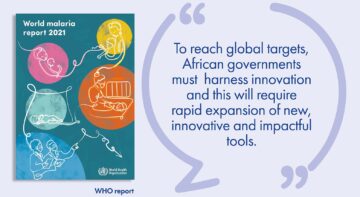Blogs

On 6 October 2021, we received the best news ever, the WHO recommendation for widespread use of the RTS,S vaccine for children at risk in sub-Saharan Africa and other endemic regions. Hopefully, this will take us a step further in achieving ‘an African Region free of malaria’ by 2030.
As someone who has suffered from malaria multiple times and seen children in my community suffer and even die of malaria this was great news and a game changer since it will decrease the risk of severe malaria among children by 30%.
As is already known, malaria kills close to half a million people each year, nearly all of them in sub-Saharan Africa, including more than 260,000 children under 5. The RTS,S malaria vaccine—the first successful anti-parasite vaccine in humans—is recommended as a 4-dose regimen, with the first dose given at age 5 months. It is more than 130 years after the naming of the Plasmodium parasites behind malaria. It is only now that we can finally look at the road towards elimination and eradication of malaria in our region after this vaccine announcement.
But of course, we should not forget other prevention measures like the use of bed-nets, indoor residual spraying and ACTs, and newer technologies in the pipeline like using genetic modification to reduce the mosquito population. The Target Malaria project is using genetic modification to reduce the mosquito population by creating a sex bias in the population that can be male – meaning that there will be more males than females. Male mosquitoes do not bite and are unable to transmit pathogens to humans. Female mosquitoes, on the other hand, are able to bite and transmit malaria.
Malaria is also still on top of the global and regional agenda and so it remains a priority, identified in target 3.3 of the Sustainable Development Goals (SDGs) which commits to end it by 2030. The WHO also reaffirms to end it by then. Also, despite the significant progress made, malaria continues to be a major health and development problem in the Africa Region as it still bears the biggest malaria burden with about 190 million cases (89% of the global total) and 400 000 deaths (91% of the global total) in 2015 alone (newer stats).
As for the approved vaccine the 30% protective efficacy is low and it will depend on each country’s wish to use it or not but it remains a good tool to be added to the rest of prevention tools that are effective. As we wait for more effective vaccines, we should also assume that funding for this malaria vaccine RTS,S is not at the expense of other interventions currently being used!
The author is a science and technology journalist. She is also a media trainer and the founder of the Health Journalists Network in Uganda.
Related Posts





